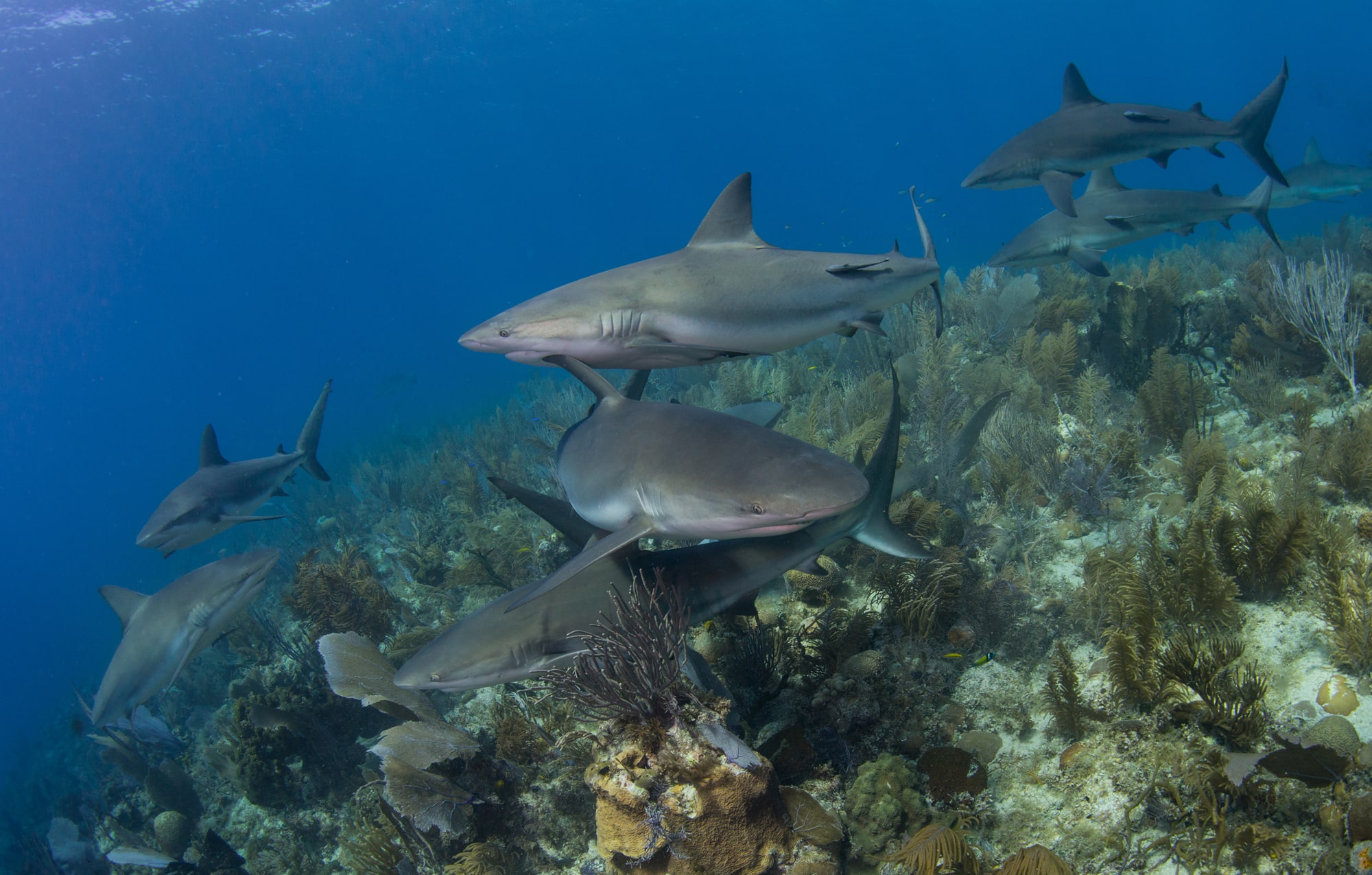Marine Life & Conservation
Things that sting… and how to avoid them!
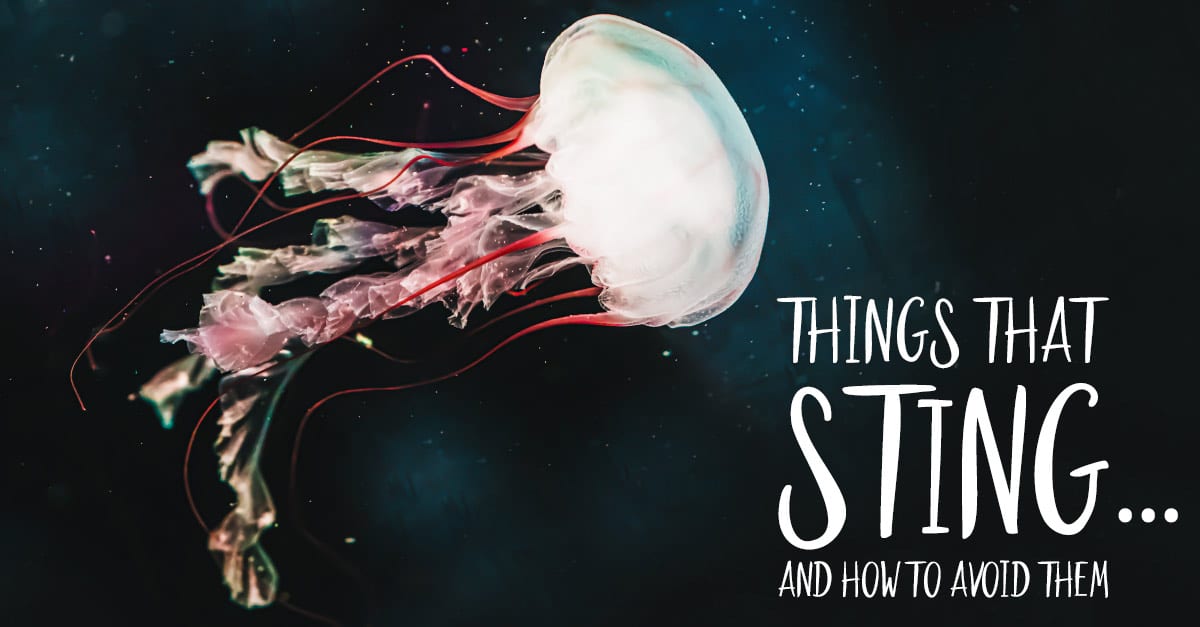
By Gemma Smith
Here be Dragons warned medieval maps, as land gave way to uncharted oceans and their mysterious inhabitants. Well, as it turns out there are dragons in the seas, but they are small and loveable (Phyllopteryx taeniolatus). No threat at all! There are however creatures who can give divers, snorkelers, swimmers and surfers painful and, at times, fatal stings. Here are some of them to look out for… but remember, these animals are only defending themselves or trying to catch their dinner!
Stingray
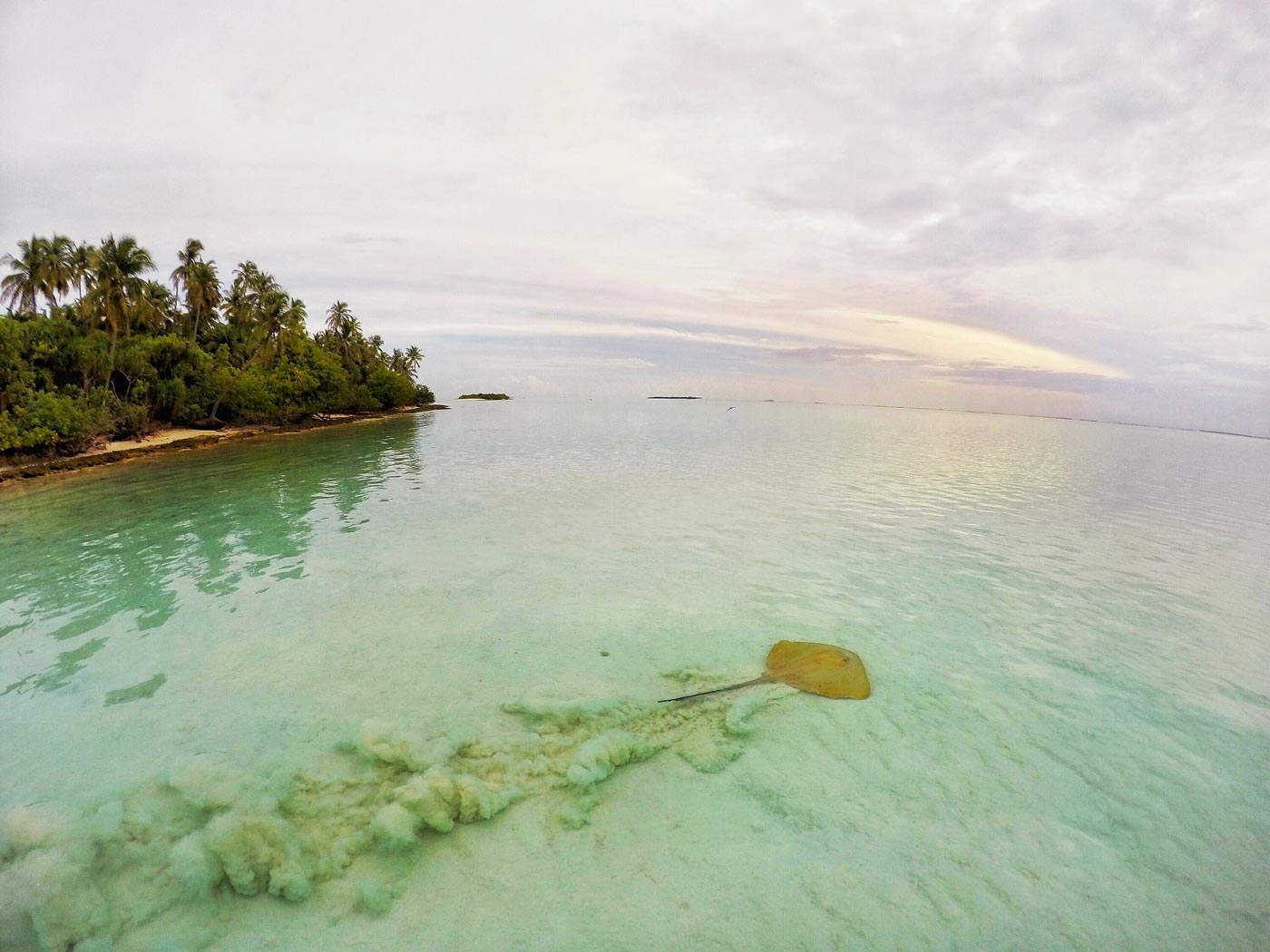
The death of Australian naturalist Steve Irwin from a stingray made international headlines in 2006. Yet it was only the second recorded stingray-induced death in Australian waters since 1945. Stingrays are not naturally aggressive but like any animal will react if frightened. Often hiding in sand to await prey, the ‘stingray shuffle’ (sliding your feet along the sand rather than stepping down hard) can alert the animals to your presence and allow them to take avoiding action.
Stingrays are common in coastal tropical and subtropical marine waters throughout the world. Some species live in the deep ocean, and there are also river stingrays. They have a venomous barb on the end of their tail which they use for defense
Stingray injuries are rarely fatal. In Steve Irwin’s infamous case, the stinger penetrated his chest cavity causing massive trauma. Nonetheless, stings are serious. They can cause pain, bleeding, nausea, weakness, and fainting. Embedded spines are best left to medical professionals to remove. This is in case the barb breaks off in the wound, which may lead to infection.
First aid includes cleaning the wound and immersing the injury in hot (40° C/104° F) water if possible for at least 30 minutes. Remember: Always seek medical attention for a stingray sting.
Weever Fish
This small fish which rests in sandy shallows near the shore punches, literally, above its weight! Its toxic dorsal spines produce acute pain if stepped on. Other symptoms are nausea, headache, and even abdominal cramps. Death is extremely rare.
As with other such injuries don’t remove embedded spines with bare hands. Always wear gloves or use tweezers! To reduce pain, immerse the foot in hot water (as above with stingray injuries). These small but potent fish live in the coastal waters of the Atlantic, North Sea, and the Mediterranean.
Jellyfish
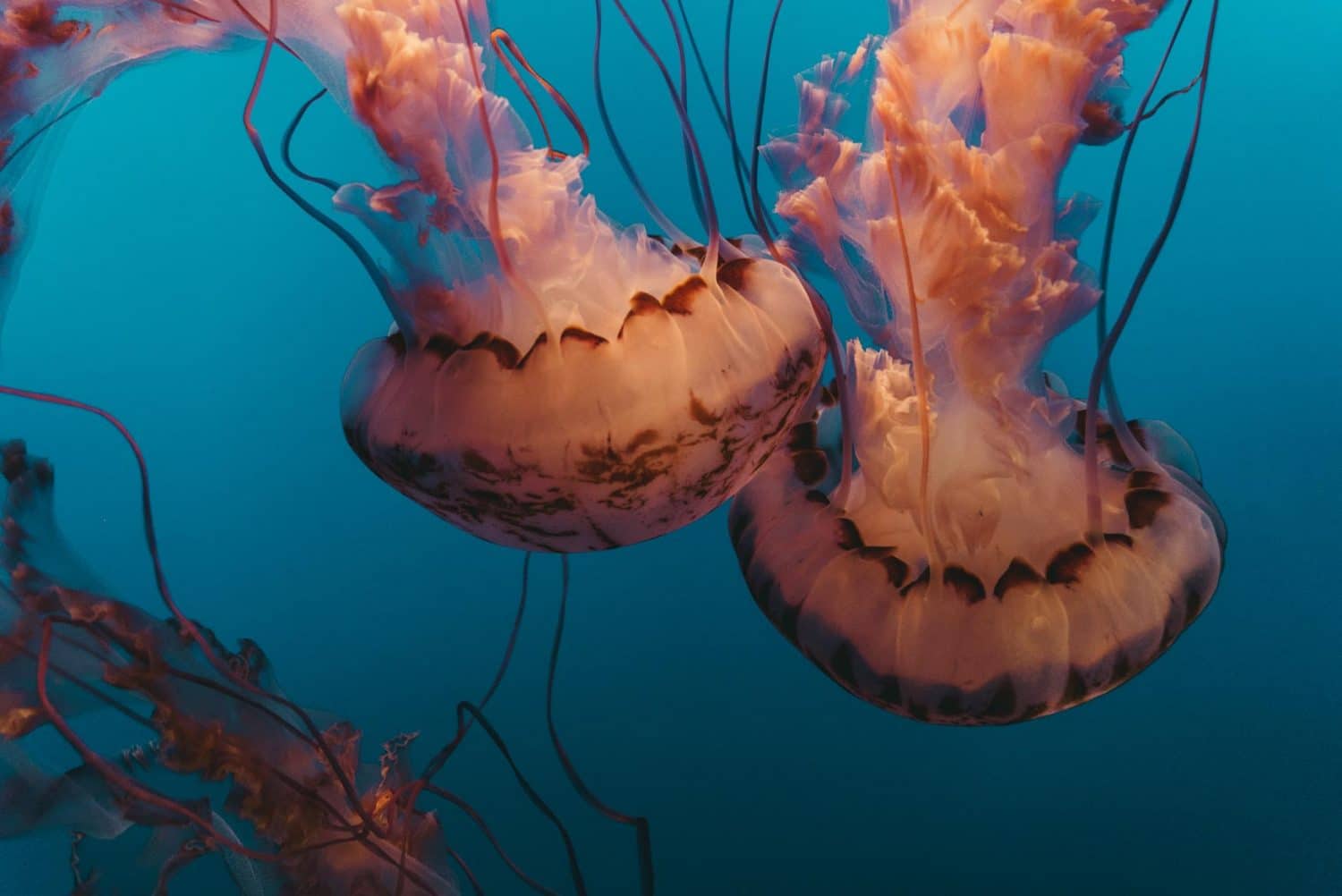
These sea creatures have tentacles covered with individual stingers called nematocysts. Jellyfish generally fire their darts into prey, but swimmers, divers, and snorkelers can be stung by physical contact. Swarms of jellyfish can also wash up on beaches.
in January 2019 about 13,000 stings were recorded on Queensland beaches from a massive influx of bluebottle jellyfish!
In May 2017 more than 300 Barrel jellyfish washed up on a beach in Wales.
So long as the stinger in the animals is still hydrated it can fire off into unsuspecting beachcombers who touch the animals. Always remove any tentacles using gloves or tweezers and, to reduce pain, immerse the affected area in hot water.
Most stings from jellyfish cause rashes and/or blisters. More acute reactions can be headaches or even chest pain. But stings from the Australian Box jellyfish and the Portuguese Man-of-War can be fatal. These need immediate emergency medical attention.
Be prepared to perform CPR in case of respiratory failure. Sea Wasp stings may prove fatal in as little as three minutes. To be safe, do your research before diving: avoid known Box Jellyfish habitats and minimize the amount of uncovered skin.
Blue-Ringed Octopus
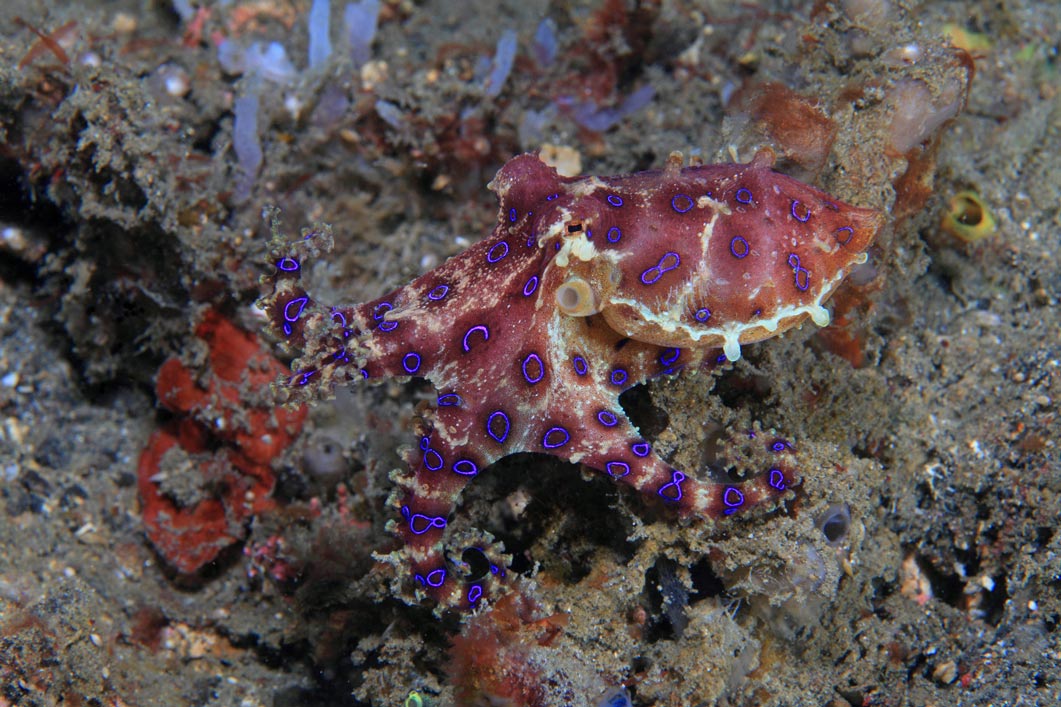
This small (12-20 cm/5-8 in) shy little octopus with its distinctive blue rings has enough venom to paralyze ten adult humans according to a University of Sydney study. Found in tide pools and coral reefs in the Pacific and Indian Oceans, it spends much of its time hiding in small crevices or abandoned shells.
If threatened, its bite is tiny and relatively painless. The venom however can cause tingling of the lips and tongue, followed by difficulty swallowing, dizziness, and headache. This can progress to paralysis and eventual respiratory distress or failure. The victim is aware something is wrong but can do nothing.
If bitten by a Blue-ringed octopus always seek medical attention. First aid is pressure on the wound (‘pressure immobilization technique’) and artificial respiration (CPR) if there are signs of respiratory failure. Hospital treatment consists of putting the victim on a medical ventilator until the patient’s own system can metabolize and secrete the venom. Luckily there are few reported deaths. With timely medical help, full recovery is the norm.
Cone snails
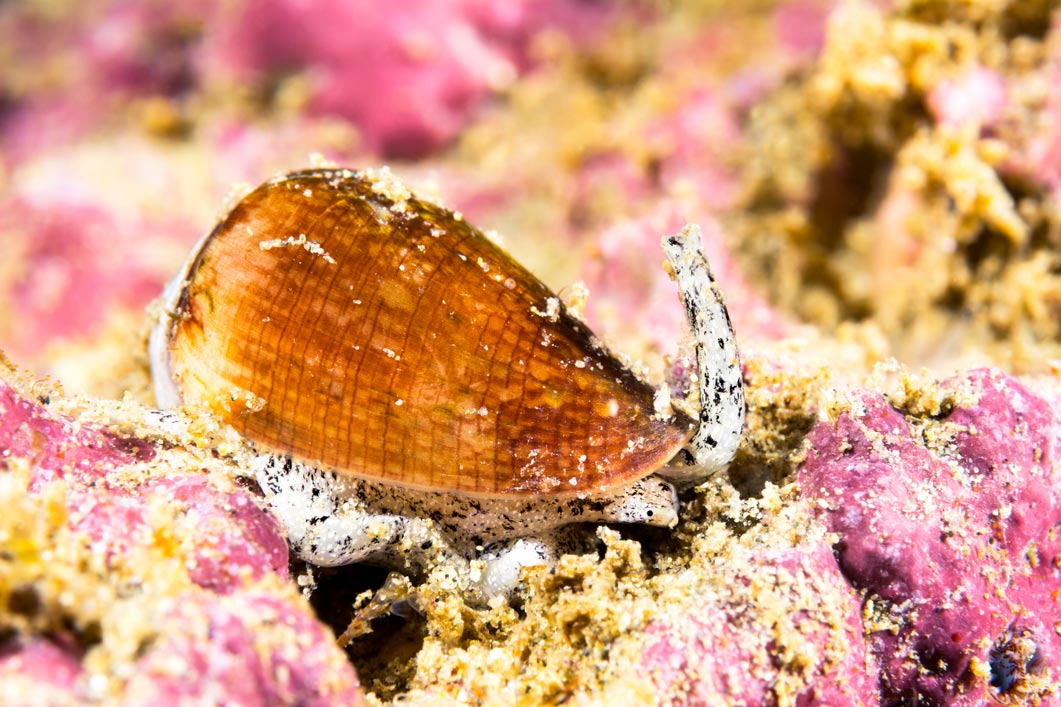
There are about 600 species of cone snail. They can be found in the Indian and Pacific Oceans, the Caribbean and the Red Sea. They live in reefs hiding themselves partially under sandy sediments. They often have beautifully patterned shells, very attractive to collectors.
All cone snails are poisonous to some degree. It is only the larger ones, up to 23 cm/9 in long, which we need to worry about. Every snail has a venom-injecting ‘tooth’; someone picks up a cone snail it responds by ‘biting’ the offender with its harpoon-like tooth.
In the case of the larger snails this tooth can sometimes penetrate gloves or wetsuits. This ‘bite’ can cause mild to moderate pain. In more serious instances numbness, blurred visions and paralysis can occur. Paralysis can sometimes lead to respiratory failure. Symptoms can appear immediately or may take a few days.
Always seek medical attention in case of a cone snail sting. First aid measures can include application of heat (such as soaking the affected area in hot water) for pain relief. Also use of the ‘pressure immobilization technique’ can help slow progression of the toxin. Watch out for symptoms appearing in succeeding days.
Finally
These marine creatures are not generally aggressive but will react if frightened, so some general rules:
- Don’t touch them. Even dead jellyfish can sting!
- Be careful where you put your hands; someone may be lurking under a rock or in a crevice or an abandoned sea shell.
- If walking in shallow water do the ‘stingray shuffle’! This gives anything hidden in the sand time to get out of the way. After all, they don’t want to waste their venom on you!
- The use of vinegar on a sting is controversial but recent research from the University of Hawaii on Man of War stings has shown that rinsing the area with household vinegar can halt discharge of more venom.
- Don’t pee on a sting. It doesn’t help!
- Don’t touch spines with bare hands
- Gently clean the wound but don’t scrub, close, or cover it
- Remember the pressure immobilization technique, and use if recommended (see below)
- Always seek medical advice if there is evidence of chest pain, difficulty in breathing or numbness, or if you are in any way concerned about the injury. Minor injuries might mask a bigger problem. Better safe than sorry!
Pressure Immobilization Technique
This technique was developed in the 1970s by an Australian medical researcher, Struan Sutherland. It was originally designed to be used on certain snake and spider bite injuries. Its purpose is to contain the spread of venom from the affected area, and prevent the venom circulating to reach the vital organs.
It is not suitable for all bites/stings whether for snakes, spiders or other creatures. It is recommended for blue-ringed octopus bites and cone snail stings. Check DAN or another reputable site to refresh your memory if diving in waters where you are likely to meet these creatures.
The procedure is generally to:
- Use an elasticated bandage, if available, to wrap the affected limb and apply firm pressure. Clothing such as a long-sleeved shirt or pantyhose can be used if nothing else is available.
- Begin by bandaging a couple of inches above the bite site and then downwards over and past the bite site to the hand or foot.
- The bandage should be snug but should not impede blood circulation.
- The limb must be kept as immobile as possible as movement will encourage blood flow.
- Splint the limb if possible or use a sling on upper limbs to further immobilize the patient.
- Above all, seek medical help!
These are a few of the problems you may encounter while diving, snorkeling, or other water-based activities. It is important to always keep your First Aid knowledge up to date, and to carry basic First Aid equipment whenever you dive. Remember, the oceans are a marvelous place full of amazing and unique creatures. Respect them, and your visits to their world will be a delight and not a disaster.
![]() To find out more about International Training, visit www.tdisdi.com.
To find out more about International Training, visit www.tdisdi.com.
Marine Life & Conservation
Double Bubble for Basking Sharks

 The Shark Trust is excited to announce that, for two more days only, all donations, large or small, will be doubled in the Big Give Green Match Fund!
The Shark Trust is excited to announce that, for two more days only, all donations, large or small, will be doubled in the Big Give Green Match Fund!
Donate to Basking in Nature: Sighting Giants
The Shark Trust is hoping to raise £10k which will be doubled to £20k. This will go towards Basking in Nature: Sighting Giants. And they need YOUR help to reach they’re goal.
The Shark Trust’s citizen science project is to monitor and assess basking sharks through sightings; encouraging data collection, community engagement, and promoting nature accessibility. This initiative aims to enhance health and wellbeing by fostering a deeper connection with British Sharks.
Campaign Aims
- Increase citizen science reporting of Basking Sharks and other shark sightings to help inform shark and ray conservation.
- Provide educational talks about the diverse range of sharks and rays in British waters and accessible identification guides!
- Create engaging and fun information panels on how to ID the amazing sharks and rays we have on our doorstep! These can be used on coastal paths around the Southwest. With activities and information on how you can make a difference for sharks and rays!
- Promote mental wellbeing through increasing time in nature and discovering the wonders beneath the waves!
Donate, and double your impact. Click Here
Marine Life & Conservation
Leading UK-based shark conservation charity, the Shark Trust, is delighted to announce tour operator Diverse Travel as a Corporate Patron
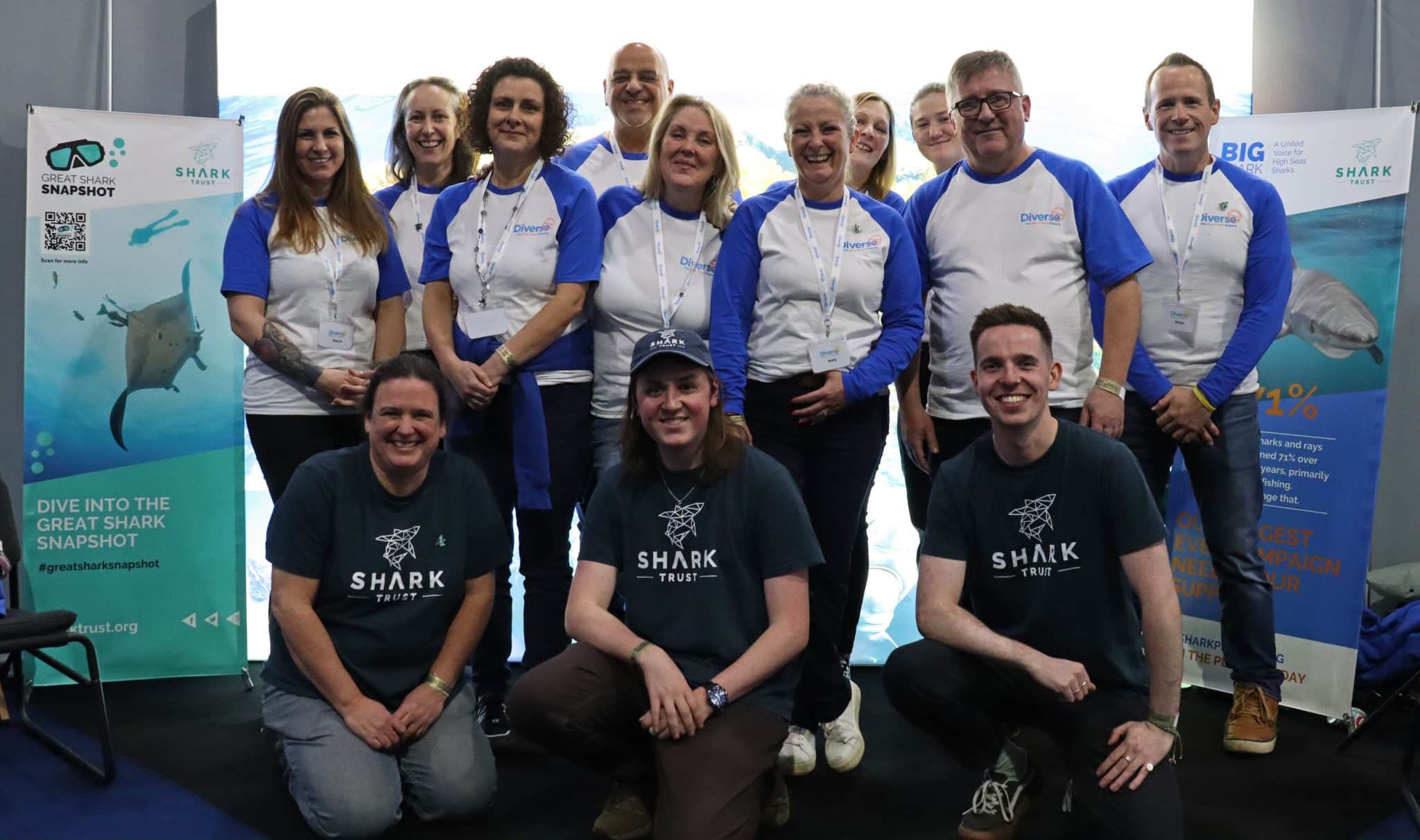
 Corporate Patrons provide a valuable boost to the work of The Shark Trust. The Trust team works globally to safeguard the future of sharks, and their close cousins, the skates and rays, engaging with a global network of scientists, policymakers, conservation professionals, businesses and supporters to further shark conservation.
Corporate Patrons provide a valuable boost to the work of The Shark Trust. The Trust team works globally to safeguard the future of sharks, and their close cousins, the skates and rays, engaging with a global network of scientists, policymakers, conservation professionals, businesses and supporters to further shark conservation.
Specialist tour operator Diverse Travel has operated since 2014 and is committed to offering its guests high quality, sustainable scuba diving holidays worldwide. Working together with the Shark Trust will enable both organisations to widen engagement and encourage divers and snorkellers to actively get involved in shark conservation.
“Sharks are truly at the heart of every diver and at Diverse Travel, we absolutely share that passion. There is nothing like seeing a shark in the wild – it’s a moment that stays with you forever!” says Holly Bredin, Sales & Marketing Manager, Diverse Travel.
“We’re delighted to celebrate our 10th year of business by becoming a Corporate Patron of the Shark Trust. This is an exciting partnership for Diverse and our guests. We will be donating on behalf of every person who books a holiday with us to contribute towards their vital shark conservation initiatives around the world. We will also be working together with the Trust to inspire divers, snorkellers and other travellers to take an active role – at home and abroad – in citizen science projects and other activities.”
Paul Cox, CEO of The Shark Trust, said:
“It’s an exciting partnership and we’re thrilled to be working with Diverse Travel to enable more divers and travellers to get involved with sharks and shark conservation. Sharks face considerable conservation challenges but, through collaboration and collective action, we can secure a brighter future for sharks and their ocean home. This new partnership takes us one more valuable step towards that goal.”
For more information about the Shark Trust visit their website here.
For more about Diverse Travel click here.
-

 News3 months ago
News3 months agoHone your underwater photography skills with Alphamarine Photography at Red Sea Diving Safari in March
-

 News3 months ago
News3 months agoCapturing Critters in Lembeh Underwater Photography Workshop 2024: Event Roundup
-

 Marine Life & Conservation Blogs3 months ago
Marine Life & Conservation Blogs3 months agoCreature Feature: Swell Sharks
-

 Blogs2 months ago
Blogs2 months agoMurex Resorts: Passport to Paradise!
-

 Blogs2 months ago
Blogs2 months agoDiver Discovering Whale Skeletons Beneath Ice Judged World’s Best Underwater Photograph
-

 Gear Reviews2 weeks ago
Gear Reviews2 weeks agoGEAR REVIEW – Revolutionising Diving Comfort: The Sharkskin T2 Chillproof Suit
-

 Gear Reviews3 months ago
Gear Reviews3 months agoGear Review: Oceanic+ Dive Housing for iPhone
-

 Marine Life & Conservation2 months ago
Marine Life & Conservation2 months agoSave the Manatee Club launches brand new webcams at Silver Springs State Park, Florida
















